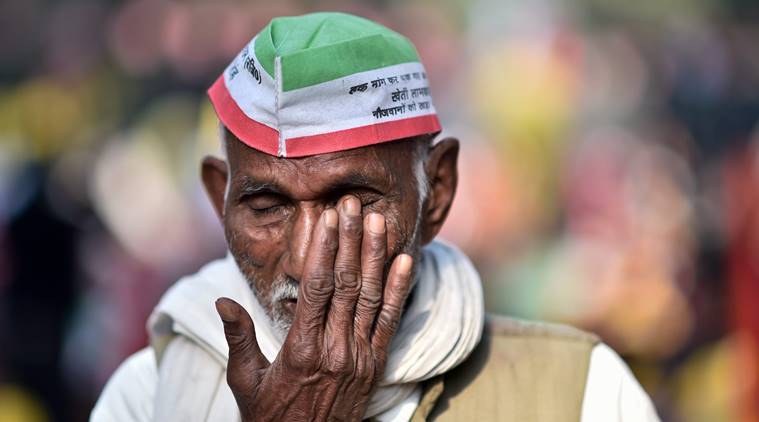Written by Harish Damodaran |New Delhi |Updated: January 17, 2019 12:16:55 am
Farmers bear the burden of deflation
Demonetisation, coupled with daily limits on cash transactions and fear of being tracked by revenue authorities post the Goods and Services Tax regime, have made traders less inclined to purchasing and stocking up produce during the harvest season.

The defining feature of Indian agriculture in the last five years — much of it under the Narendra Modi government’s tenure — has been low prices for farm produce.
The accompanying table shows the year-on-year consumer food price inflation rate, which averaged over 13.5 per cent during 2013, almost halving to around 7 per cent in 2014. Since then — the Modi government came to power in May 2014 — it fell to 5-5.5 per cent by 2016, before plunging to 1.3 per cent levels over the next two years. In 2017 and 2018, retail food inflation ruled below even the overall consumer price index (CPI) inflation.
The same holds true for the wholesale price index (WPI). The annual inflation based on it — which is closer to producer realisations than at the retail end — has been lower both for food articles and non-food agricultural articles (oilseeds, cotton, jute, silk, tobacco, raw hides, fodder, natural rubber, flowers, etc) during the last two years, compared to the corresponding rise in the all-commodities WPI.
The deceleration in farm produce prices under the Modi government’s tenure can be broadly ascribed to three factors.
The first has to do with a crash in international agri-commodity prices. The United Nations Food and Agricultural Organization’s food price index (base year: 2002-04=100) soared from 89.6 in 2002 to 229.9 in 2011. Subsequently, it eased somewhat to 209.8 in 2013 and 201.8 in 2014, before collapsing to 161.5 in 2016. Low global prices resulted in a sharp drop in India’s farm exports, even while increasing its vulnerability to imports. The combined effect was to depress domestic prices.
Second, this period, which saw the end of a decade-long global commodity boom, was also when the Modi government adopted a new inflation-targeting monetary policy framework. With the Reserve Bank of India being mandated to achieve a 4 per cent medium-term target of inflation based on the CPI — in which food and beverage items have a total 45.86 per cent weight — it led to even the slightest hardening of onion, potato, pulses or sugar prices triggering export bans, duty-free imports and stockholding restrictions. The burden of hawkish policy responses fell mainly on farmers, who were also granted only moderate minimum support price hikes during the first three years of this government.





































No hay comentarios:
Publicar un comentario